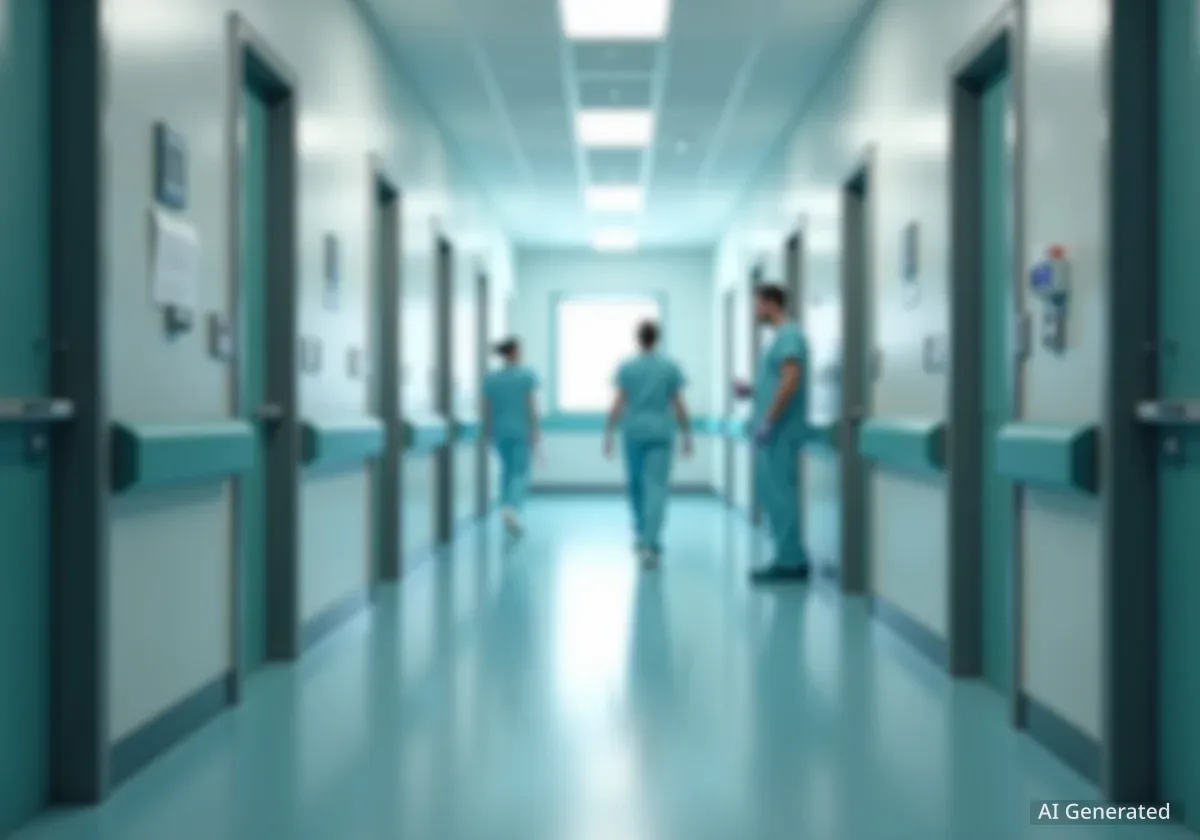Penn Medicine is implementing a centralized capacity management system to address the persistent challenge of high patient demand exceeding available hospital beds. This new approach coordinates patient placement across its seven acute-care hospitals, aiming to improve access to specialized care and increase overall efficiency. Early results show significant improvements, including the capacity to treat thousands of additional patients annually.
Key Takeaways
- Penn Medicine has created a centralized Capacity Management Center to manage patient flow across its entire health system.
- The system placed over 9,200 patients in the fiscal year ending June 30, 2025, with cardiovascular, pulmonary, and neurosurgery services being the most requested.
- A focus on reducing unnecessarily long hospital stays created capacity for an additional 3,300 patients over two years.
- A pilot program in psychiatry increased occupancy at one facility from under 50% to over 90% and reduced admission times by two hours.
A System-Wide Approach to Patient Placement
Health systems across the United States are facing growing pressure from patient demand that often outpaces hospital capacity. Penn Medicine, which operates seven hospitals across Pennsylvania and New Jersey, is tackling this issue by shifting from a hospital-centric model to a unified, system-wide strategy.
The core of this effort is the Penn Medicine Capacity Management Center. This central hub now oversees patient transfers, the PennSTAR flight program, and bed management for its three Philadelphia hospitals. The goal is to ensure patients receive the right level of care at the most appropriate facility within the network, even if it's not the one they initially arrived at.
"Our system sees some of the most complex cases in the world," said Robin Wood, PhD, MSN, vice president for system capacity and patient flow at the University of Pennsylvania Health System. "To have the capacity for the sickest of the sick, we need to make sure our supply is matching our demand."
Redefining Hospital Admissions
Previously, patient placement was often handled at the individual hospital level. The new, centralized model encourages a broader perspective.
"Let’s place you in a Penn Medicine facility that can best meet your needs," Wood explained. "That means thinking a little bit differently than how we used to think, which was, ‘If they arrive in your building, they’re yours.’”
This change is critical for a health system that provides highly specialized services, such as organ transplants, advanced trauma care, and complex neurosurgery, which are in constant demand from across the region and globe.
By the Numbers: Patient Transfers
In the fiscal year ending June 30, 2025, the Penn Medicine Transfer Center managed just over 9,200 patient placements. The top three requested services were:
- Cardiovascular Medicine: 1,617 transfers
- Pulmonary Services: 1,211 transfers
- Neurosurgery Services: 998 transfers
The Hospital of the University of Pennsylvania (HUP) received the majority of these transfers, accounting for 53% of the total.
The Nerve Center of Operations
The Transfer Center operates 24/7, fielding requests from other hospitals and coordinating patient movements within the Penn Medicine network. These cases range from life-threatening emergencies to urgent and elective procedures.
For the most critical situations, classified as Level 0, the objective is to get the patient into a Penn Medicine bed within two hours. This involves a rapid, coordinated response that can involve up to 20 people, including specialists, flight crews, and hospital staff, all communicating remotely.
"Someone else has to be your eyes, and you have to ask the right questions to put the picture together. Critical thinking is needed in this job."
The team must constantly balance competing priorities in real-time. "We’re constantly prioritizing and reprioritizing to keep the flow moving," said Joshua Davis, director of operations for the center. "We’re making time-sensitive decisions because we have real-time, competing priorities."
Coordinating Complex Care
A typical high-stakes transfer, such as a patient in cardiogenic shock needing ECMO life support, requires immense coordination. The Transfer Center activates cardiologists and surgeons to review the case, finds an available bed, and dispatches the PennSTAR helicopter. Simultaneously, the receiving hospital's care team and environmental services staff prepare for the patient's arrival, ensuring a seamless transition.
Early Successes and Measurable Impact
The shift to centralized management has already produced positive results, particularly in psychiatric care and overall hospital efficiency.
Transforming Psychiatric Care Access
A partnership between the Psychiatry department and the Transfer Center streamlined the referral process for inpatient psychiatric beds. Before the change, a backlog of referrals led to crowding in emergency departments, while one of the two specialized units, HUP–Cedar Avenue, had occupancy rates as low as 30% to 50%.
Under the new system, the Transfer Center assigns referrals directly to available beds. According to Katharine Dalke, MD, vice chair for clinical operations in Psychiatry, this collaboration has been highly effective.
Since the change began in January 2024, patient admission times have improved by approximately two hours. More importantly, occupancy rates at HUP–Cedar Avenue have climbed to over 90%, ensuring that more patients receive timely care.
Improving Patient Flow and Reducing Stays
Another key focus has been improving patient throughput by managing the "length of stay." The goal is not to rush patients but to ensure they move efficiently through their care plan toward a safe discharge.
"The best thing we can do for all our patients is to help them progress toward returning home, so more patients can get access to care," stated William Schweickert, MD, physician executive for patient access and throughput at HUP.
This initiative is measured by a reduction in "excess days," the time a patient remains hospitalized beyond what is medically optimal. From July 2023 to June 2024, Penn Medicine reduced excess patient days by about 60%, creating the capacity to care for 1,700 more patients. In the following year, further improvements allowed for a total of 3,300 additional patients to be treated over the two-year period.
The Path Forward for Capacity Management
Leaders at Penn Medicine acknowledge that these early victories are just the beginning. The complexity of managing capacity increases when dealing with units that are consistently full, such as intensive care units during flu season.
Dr. Schweickert emphasized the need for superior coordination. "We have to consider which services only HUP can provide, and which can be met within the system fast and effectively," he said. This might involve directing patients with certain respiratory illnesses to other hospitals in the system to preserve HUP's capacity for unique, complex cases like cellular therapy or organ transplants.
Future plans include strengthening partnerships with outpatient, virtual, and home-based care programs to help patients avoid hospitalization or return home sooner. Leaders believe that continuous, incremental improvements are the key to long-term success.
"Capacity management takes time to see results," Wood concluded. "You just have to keep chipping away at it. There's no magic bullet. It's different initiatives coming together... We’re trying to do the best thing for the patient, to get them where they need to be. That's our guiding light."





